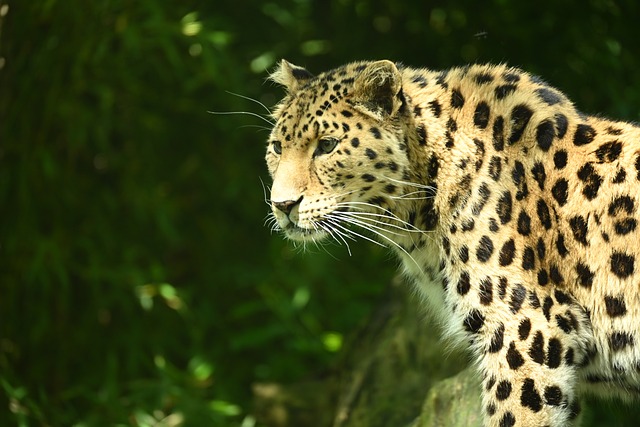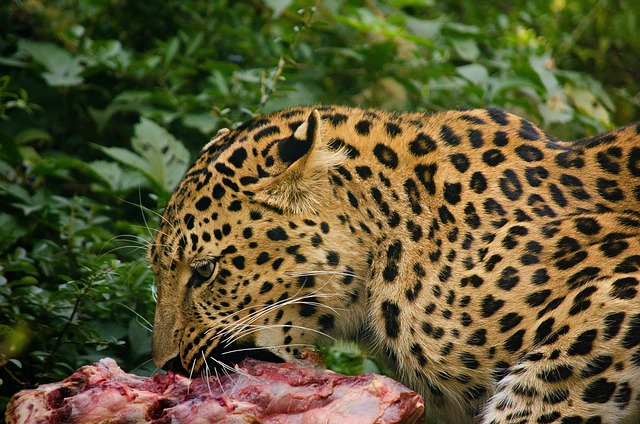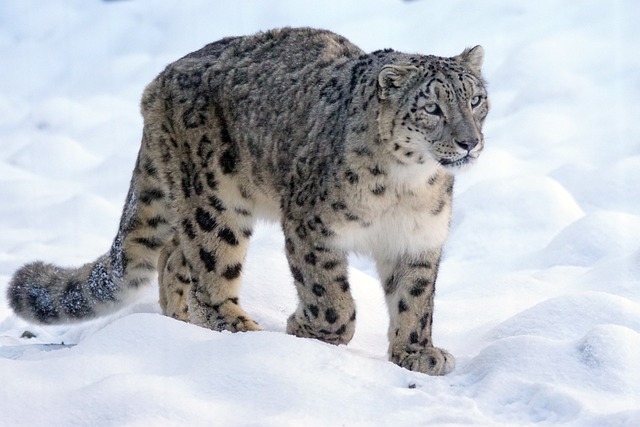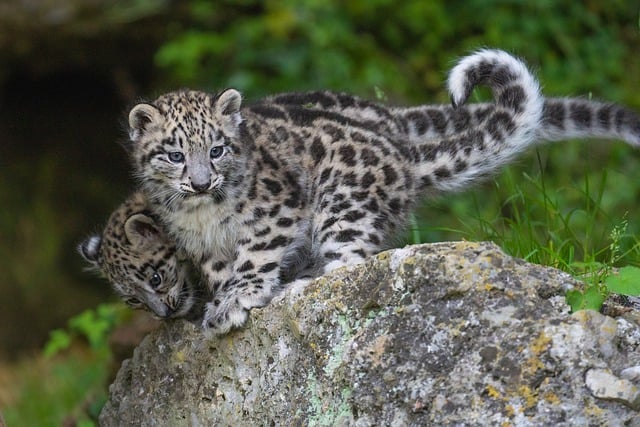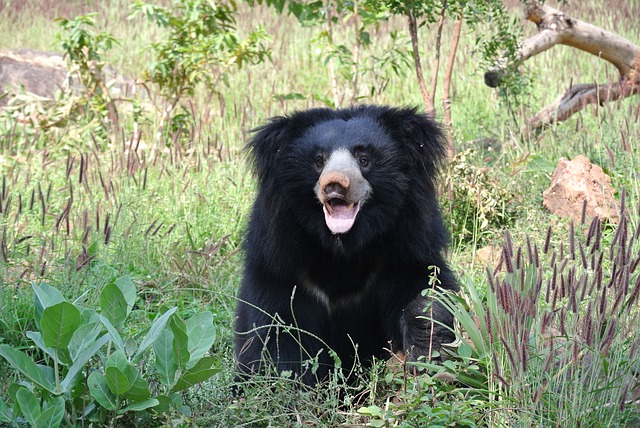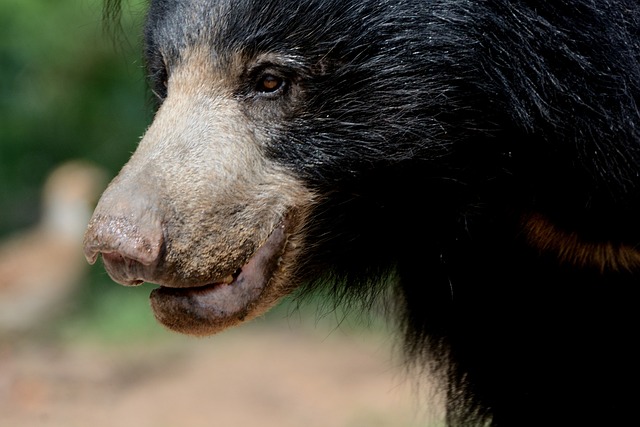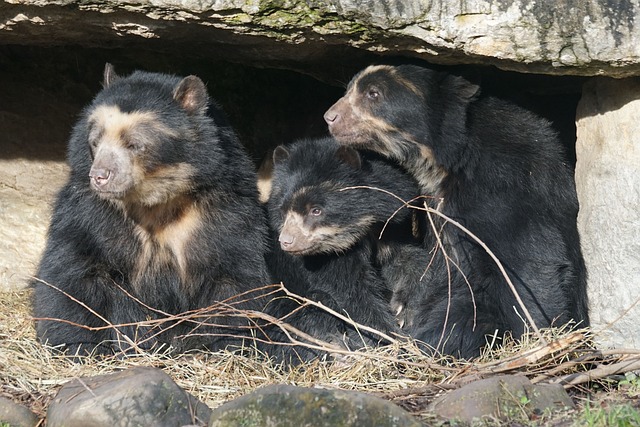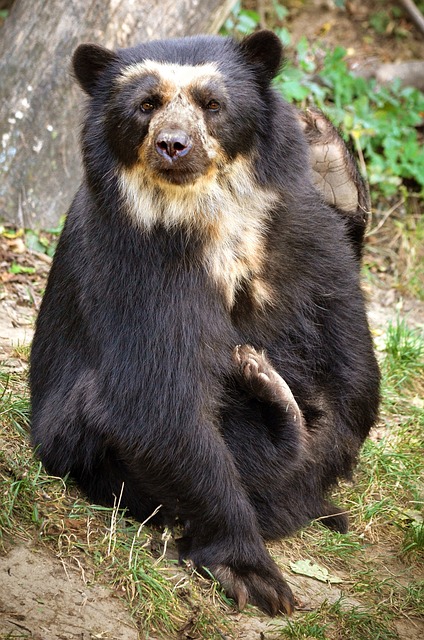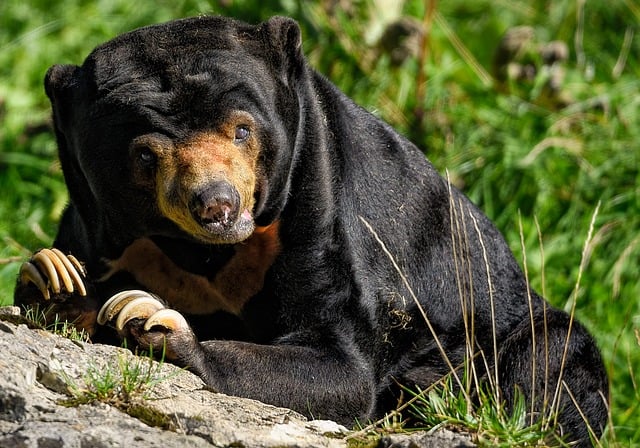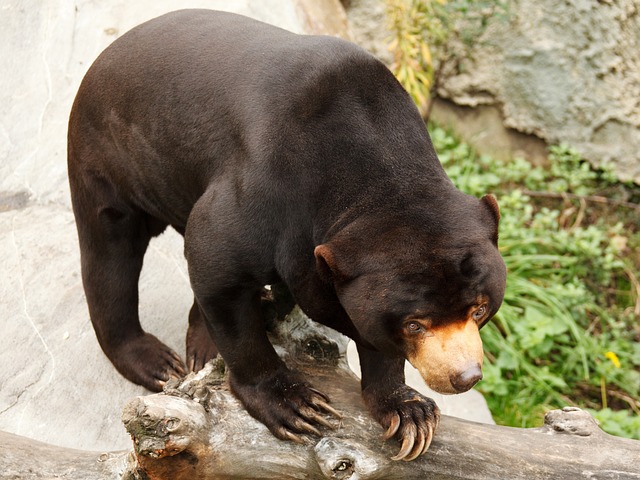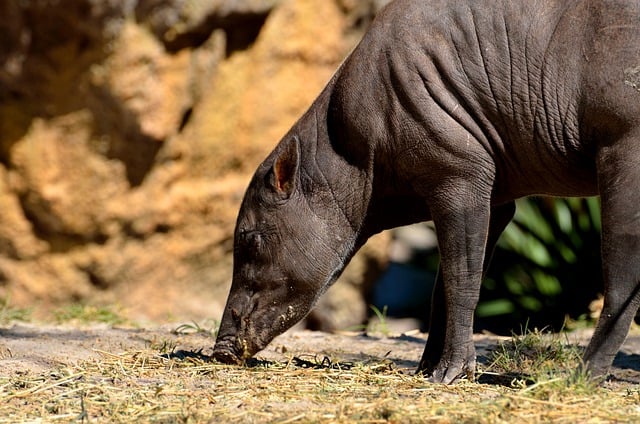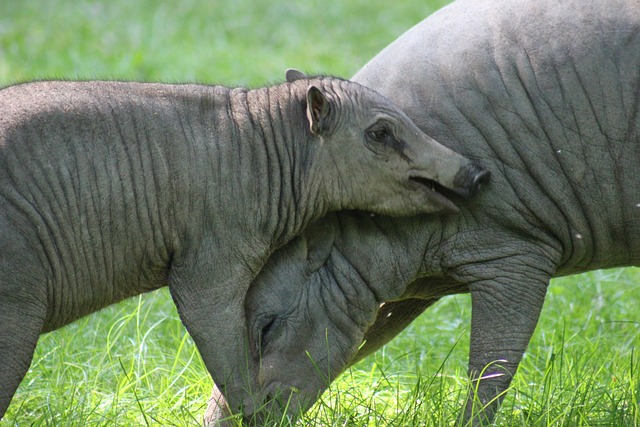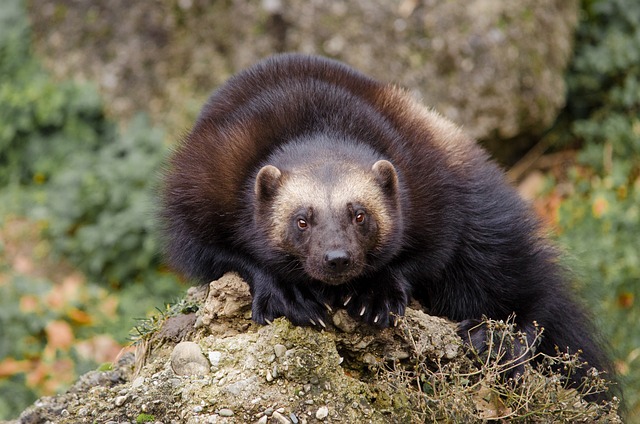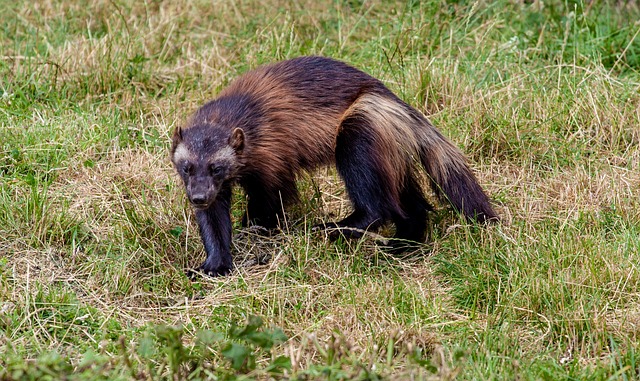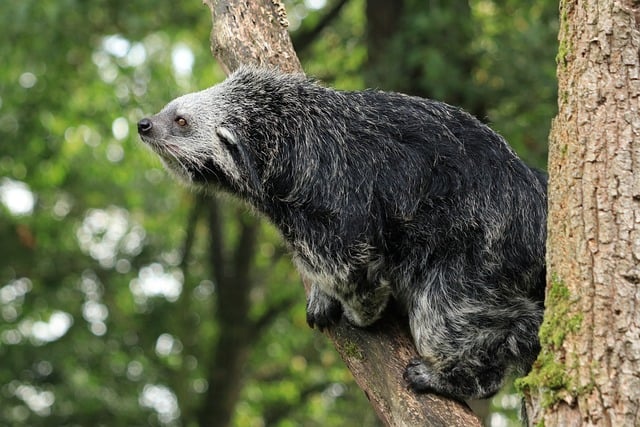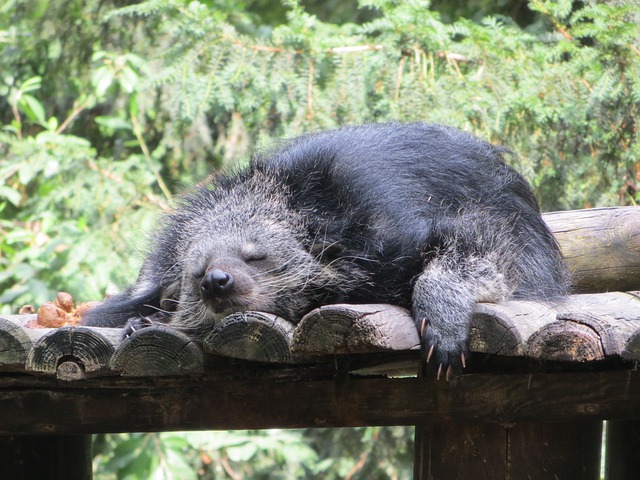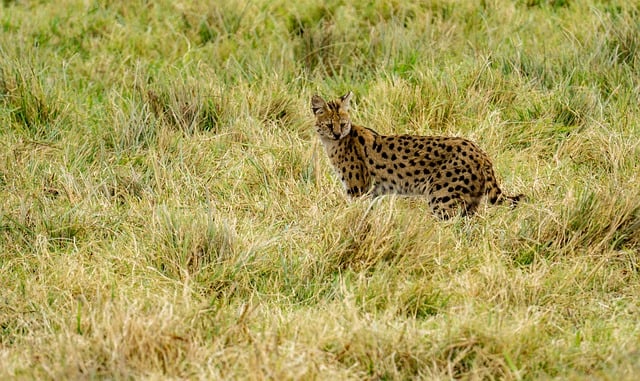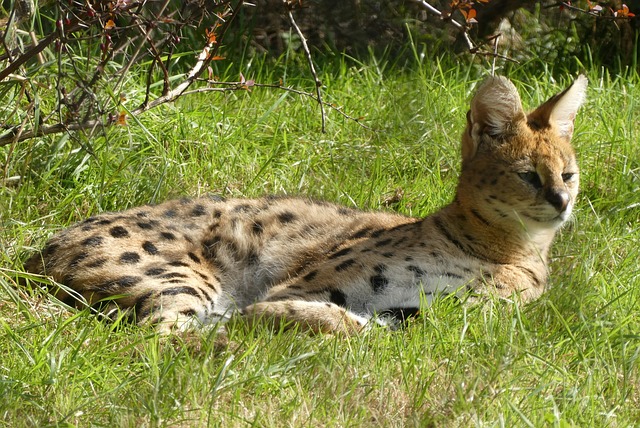The moose, also known as the Alces alces, is a magnificent creature that roams the forests, wetlands, and tundras of North America. Standing tall at an average height of 6 feet and weighing up to 1,500 pounds, the moose is the largest land animal on the continent.
Its impressive size and unique characteristics make it a fascinating creature to study and admire. In this article, we will delve into the world of the moose and provide a comprehensive guide to this iconic species.
From its physical traits to its behavior and conservation efforts, we aim to inform and entertain readers about the amazing world of the moose. So, let's dive in and discover the wonders of the majestic moose.
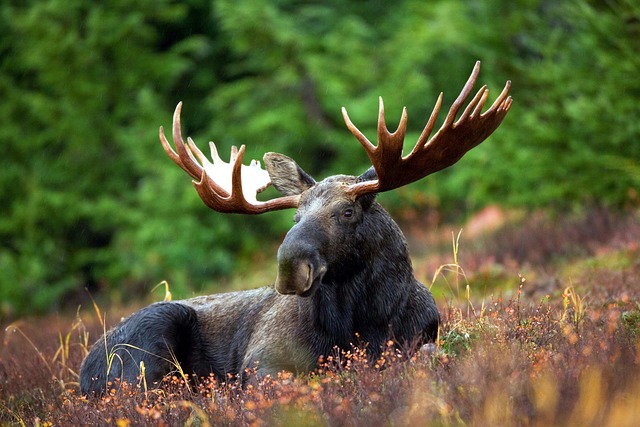
The Moose's Physical Characteristics
The majestic moose is truly a sight to behold. As North America's largest land animal, it stands tall and proud, commanding attention with its impressive size and distinctive features. In this section, we will delve into the physical characteristics of the moose and explore how these traits help them survive in their habitat.
Size and Weight:
The average size of a moose can vary greatly depending on their gender and location. Male moose, also known as bulls, can range from 5-7 feet tall at the shoulder and can weigh anywhere from 800-1,500 pounds. The female moose, known as cows, are slightly smaller, with an average height of 4-6 feet and a weight of 600-800 pounds. These enormous animals are not only tall but also have a long and broad body frame, making them an impressive sight in the wild.
Distinctive Features:
The most striking physical feature of the moose is undoubtedly its antlers. These antlers are unique to male moose and are shed and regrown annually. They can span up to 6 feet across and are used for fighting during the mating season. Another notable feature of the moose is their large, flat hooves, which act as snowshoes in the winter and help them navigate the wetlands and marshes in their habitat. Their thick, shaggy fur also serves as insulation against the cold weather, making them well-adapted for their environment.
Survival in Habitat:
The moose's physical characteristics are perfectly suited for their habitat, which includes forests, wetlands, and tundras. Their long legs and broad hooves allow them to navigate through deep snow and rugged terrain with ease. The antlers of the male moose also serve a practical purpose, helping them clear snow and forage for food in the winter. Additionally, their thick fur and layer of fat under their skin provide insulation against the cold temperatures, allowing them to thrive in harsh climates.
In terms of defense, moose have a few unique characteristics that help them survive in their habitat. Their large and powerful bodies make them challenging prey for predators such as wolves and bears. They also have excellent senses, including keen eyesight and a strong sense of smell, which helps them detect potential threats in their surroundings.
Habitat and Distribution
The habitat and distribution of the majestic moose are crucial factors in understanding the behavior and survival of this remarkable animal. Moose can be found in various regions of North America, including Canada, Alaska, and parts of the United States. They prefer habitats that offer a mix of dense forests, wetlands, and tundras, making them adaptable and resilient to changing conditions.
Forests are the primary habitat for moose, as they provide ample food in the form of tree leaves, twigs, and bark. These large animals are also excellent swimmers and can often be found in wetlands, where they feed on aquatic plants such as water lilies and pondweed. During the winter, moose migrate to tundras, where they can find access to food and shelter. This diverse habitat range allows moose to thrive in various environments and adapt to seasonal changes.
The distribution of moose in North America is largely influenced by their habitat preferences and seasonal movements. Moose typically live in the northern regions of the continent, where they have access to the required resources for survival. In Canada, moose can be found in almost every province and territory, with the highest populations in British Columbia, Ontario, and Newfoundland. In the United States, moose are found in the northern states, such as Maine, Minnesota, and Montana, and in small populations in the Rocky Mountains.
One fascinating aspect of moose behavior is their annual migration patterns. During the colder months, they migrate to warmer areas, where they can find adequate food and shelter. This seasonal migration also helps them avoid predators, such as wolves and bears, that are more active during the winter. However, with the increasing effects of climate change, moose are facing challenges in their traditional migration routes, as warmer temperatures affect the availability of food and disrupt their natural patterns.
It is crucial to preserve the habitat of moose to ensure their survival. Deforestation, industrial development, and human encroachment on their habitats are significant threats to this species. As the largest land animal in North America, moose play a vital role in the ecosystem, and any disruption to their habitat can have severe consequences. Therefore, conservation efforts are focused on protecting and restoring moose habitats, including creating wildlife corridors to connect different habitats and preserve their migratory routes.
In addition to their habitat, the distribution of moose is also affected by human activity, particularly hunting. Moose hunting is allowed in certain regions, but strict regulations are in place to ensure sustainable management of their populations. Poaching and illegal hunting pose a severe threat to moose, and it is crucial to educate the public on responsible and ethical hunting practices to protect this species.
Diet and Behavior
The diet and behavior of the majestic moose is fascinating and unique. As herbivores, moose have a diet that consists mainly of plants, making them important grazers in their ecosystem. In this section, we will explore the dietary habits of moose and their intriguing behaviors.
Diet:
Moose are known for their love for aquatic plants, especially willow and water lilies. However, they are not picky eaters and will consume a variety of plants such as shrubs, grasses, and even tree bark. In the winter months, when food sources are scarce, moose will also feed on twigs and branches from trees. Their diet is rich in fiber and nutrients, making it essential for their growth and survival.
Foraging Habits:
Moose are slow-moving animals and have a unique way of foraging for food. With their long legs, they can reach high up into trees to feed on leaves and twigs. They also use their muzzles to push away snow and uncover vegetation underneath. This behavior is especially crucial for their survival during harsh winter months when food is scarce.
Behavior:
Moose are solitary animals and prefer to live and feed alone, except during the mating season. They are not territorial animals and will rarely show aggression towards other moose. However, during the mating season, male moose, also known as bulls, can become aggressive as they compete for females. This behavior is known as the rut and is characterized by bulls displaying their strength and dominance through loud vocalizations and physical posturing.
Mating Rituals:
During the rut, male moose will engage in elaborate mating rituals to attract females. This includes bugling, which is a loud, distinctive call that can be heard for miles, and displaying their impressive antlers. Female moose, also known as cows, will choose a mate based on the strength and size of their antlers. After mating, bulls will typically move on to seek other potential mates, while cows will be left to raise their young.
Misconceptions:
There are many misconceptions about moose behavior, one of which is that they are aggressive and dangerous animals. In reality, moose are generally calm and docile, and will only show aggression if they feel threatened or during the rutting season. Another misconception is that moose are clumsy and awkward animals. However, they are incredibly agile and can run at speeds of up to 35 miles per hour.
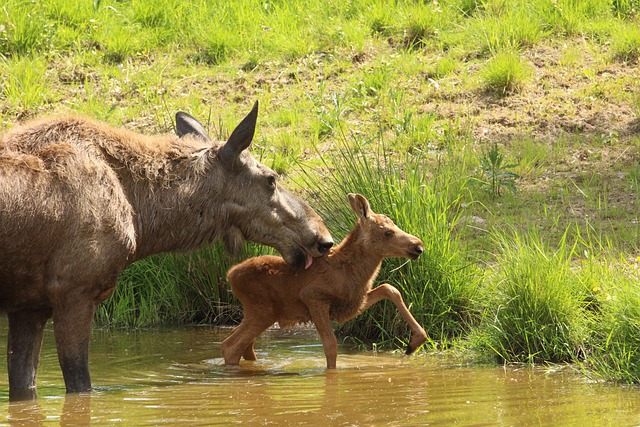
Life Cycle and Reproduction
The life cycle of a moose begins with their birth, usually in the late spring or early summer. Moose calves weigh around 30 pounds at birth and are able to walk within just a few days. They stay close to their mothers for protection and nourishment, nursing for up to 7 months before being weaned off.
As they grow, moose go through different stages of development. In their first year, they are known as “calves” and are typically more vulnerable to predators due to their small size. By the age of 6 months, they start developing their first set of antlers, which are small and covered in velvet. As they enter their second year, moose are referred to as “yearlings” and their antlers start to become more prominent.
By the age of 2, male moose, known as “bulls,” are considered adults and develop their iconic antlers. These antlers can grow up to 6 feet in length and weigh up to 80 pounds. The antlers are used for mating rituals and establishing dominance during the breeding season, also known as the “rut.” Female moose, known as “cows,” reach sexual maturity by the age of 2.
The rutting season, which takes place in the fall, is an intense time for moose. Bulls will compete for the attention of cows by displaying their antlers, grunting, and challenging other males. Once a bull has established dominance, he will mate with multiple cows. This is a crucial time for the survival of the species, as healthy and diverse genetics are crucial for a strong moose population.
After the rut, cows will carry their calves for 8 months before giving birth in the spring. Moose have a low reproductive rate, with cows only giving birth to one or two calves at a time. This, combined with the long gestation period and high mortality rates among calves, means that moose populations can be slow to recover from declines.
The relationship between mother and calf is strong, with calves staying with their mothers for up to a year. Cows are highly protective of their young and will fiercely defend them against predators. As the calves grow, they learn essential survival skills from their mothers, including how to forage for food and avoid danger.
Conservation efforts are crucial in protecting moose populations and ensuring their continued survival. Habitat loss and fragmentation, caused by human development, is a major threat to moose. Climate change, with its effects on food availability and disease, also poses a threat. Hunting, while regulated, can also impact the population if not managed properly.
In order to protect moose for future generations, it is important to support conservation efforts, educate others about the importance of preserving their habitat, and practice responsible hunting. As a symbol of the wild and majestic beauty of North America, the moose deserves all the help we can give to ensure their survival.
Threats and Conservation
Unfortunately, the majestic moose is facing numerous threats to its survival. These threats include habitat loss, climate change, and hunting. As the largest land animal in North America, moose require a vast and diverse habitat to thrive. However, with human development and urbanization, their natural habitats are being destroyed or fragmented, leaving them with limited resources and space to roam.
The most significant threat to moose, however, is hunting. Despite being a symbol of strength and power, moose are highly vulnerable to hunting. In some regions, moose are hunted for their meat and fur, while in others, they are targeted as trophies. Additionally, moose are often involved in vehicle collisions, causing significant injuries and deaths.
To combat these threats and ensure the survival of moose populations, conservation efforts are crucial. Governments and organizations have implemented various measures to protect and preserve moose habitats and populations. These efforts include creating protected areas, such as national parks and wildlife reserves, where moose can live and thrive without human interference.
In addition to protecting their habitats, conservation efforts also involve monitoring and managing moose populations. This includes tracking population numbers and implementing hunting restrictions to ensure sustainable harvesting. In some areas, moose are also relocated to areas with declining populations to help balance the numbers and prevent local extinction.
Furthermore, efforts are being made to raise awareness about the importance of moose conservation among the general public. This includes educating people about the threats facing moose and the actions they can take to help protect them. It also involves working with local communities to promote coexistence with moose and reduce potential conflicts.
But conservation is not just the responsibility of governments and organizations; individuals can also play a crucial role. Simple actions such as refraining from feeding moose or leaving food out that could attract them can help prevent human-moose conflicts. Additionally, supporting sustainable hunting practices and donating to conservation organizations can make a significant impact in protecting moose populations.
Fun Facts
As we have learned about the physical characteristics, habitat and diet of the majestic moose, it's time to dive into some fun facts about this fascinating creature. Despite being the largest land animal in North America, there is still so much to discover about the moose.
– Moose are excellent swimmers and can dive up to 20 feet underwater to feed on aquatic plants. They have even been known to out-swim humans in the water!
– Speaking of swimming, moose have a special adaptation in their nostrils that allows them to hold their breath for up to 30 seconds while diving. This gives them an advantage in reaching food sources that other animals cannot access.
– Moose are also surprisingly agile for their size, with the ability to run at speeds of up to 35 miles per hour. However, they are not very good at jumping and have trouble navigating steep slopes or obstacles in their path.
– While most people are familiar with the iconic antlers of the male moose, did you know that female moose also have smaller, more subtle antlers? These are used primarily for protection and can grow up to 5 feet in length.
– Moose are social animals and communicate with each other through a variety of sounds such as grunts, bellows, and even rattling their antlers against trees. However, they are also known for being solitary creatures and do not form herds like other animals.
– In Native American cultures, the moose is often seen as a symbol of strength and endurance. The Algonquian tribe of North America even has a legend about a giant moose that created the mountains by scraping his antlers against the ground.
– Moose are not just found in North America, they can also be found in parts of Europe and Asia. In fact, the largest moose on record was found in Sweden and weighed over 2,400 pounds!
– While they may seem like gentle giants, moose can be quite territorial and have been known to charge at humans if they feel threatened. It's important to always keep a safe distance and respect their space.
– Moose have a funny way of protecting themselves from pesky insects. They will often submerge themselves in water, leaving only their noses and antlers above the surface, to escape the annoyance of biting flies.
– Lastly, it's a common misconception that moose have poor eyesight. In fact, they have excellent vision and are able to detect movement and objects from a distance of up to 1 mile.
It's clear that there is so much more to the moose than just its size and antlers. These gentle giants have unique adaptations and behaviors that make them a truly fascinating species. So, the next time you encounter a moose, remember these fun facts and appreciate the wonder of this magnificent animal.

